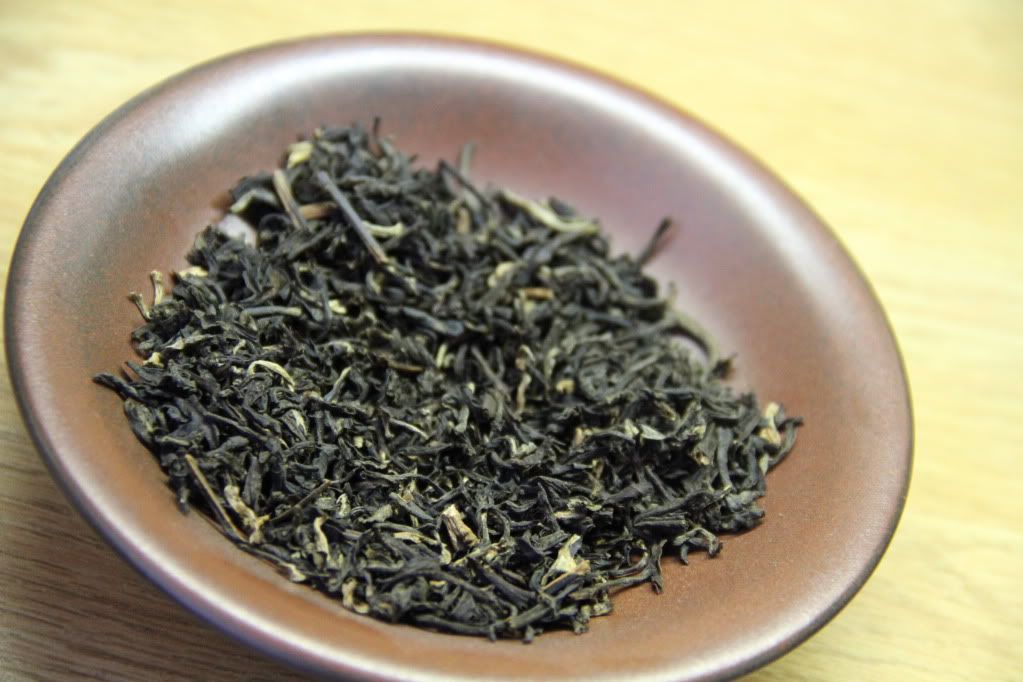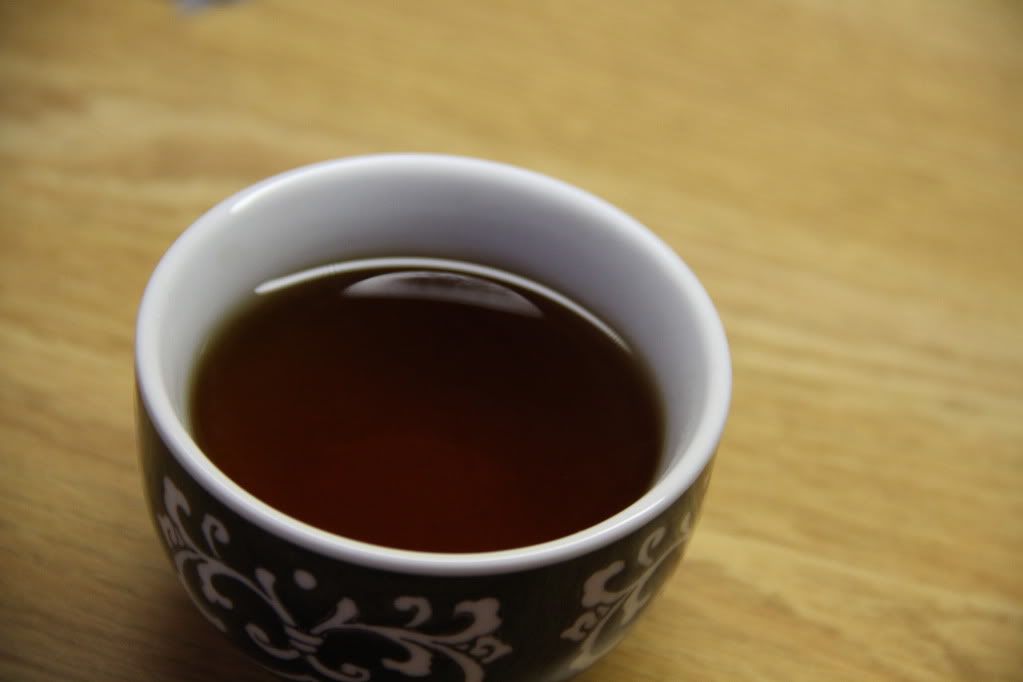This is only about the 4th, single estate Vietnamese tea I have had the privilege to spend quality time with. I enjoy different regions and the characteristics that they present.
This is a tea from the Nam Lanh tea estate. I know nothing of estates in Vietnam, so if this means anything to you readers, be kind enough to inform a novice if you so desire.
The dry leaf has malty qualities up front, but inhale deeper and one will find rose, caramel and oak. It is interesting to find even the slightest hint of a floral smell coming off of these heavily oxidized leaves.
Another surprising thing about this tea is the quality of the dry leaf. By looking at it, I would say it is comprised of about 30-40% tea buds, which in my book is fairly high.
I would not have thought that Vietnam was yet producing such high quality (perhaps orthodox) teas.
 Coming off of the top of the steaming cup are hints of dark chocolate (cocoa), vanilla and black currants.
Coming off of the top of the steaming cup are hints of dark chocolate (cocoa), vanilla and black currants.Again, the tea throws me a surprise. The fruity aspect is quite enjoyable and leaves me wanting a taste of the supposed sweet liquor.
 Wheat and barley are the first tastes to strike my ready palate. As the liquid sits, the malty astringency is felt.
Wheat and barley are the first tastes to strike my ready palate. As the liquid sits, the malty astringency is felt.On the exit; black currants dominate.
The liquor is quite sweet and absent of bitterness.
Now mind you, I did say that the tea revealed astringency, but not bitterness. People oft confuse these two descriptors.
From the taste and look of the leaves, I would say that this tea is made mostly from the assamica cultivar.
The sinensis cultivar would not have contained the malty, wheat-like taste.
 This tea did solve a mystery for me in the end.
This tea did solve a mystery for me in the end.A while back, a trip to France encouraged me to purchase some "French Breakfast" tea.
This tea resembled the taste of that very tea, and for the longest time, I could not figure out where the malty chocolate taste of the "French Breakfast" came from. I can almost guarantee that it was a Vietnamese tea that comprised the base for the blend.
This would make sense, due to the French colonization of Vietnam (1887-1954).
So many conclusions in one single cup.
Just another magical aspect of the tea leaf.
~billy








Interesting as always.
ReplyDeleteFrom the few info I have, tea in Vietnam comes from tea-houses.
And for your French tea, if you want more info, just send me the name of the company from which you bought it and I will look for it.
Ice,
ReplyDeleteIt was the "Mariage Frères French Breakfast Tea."
I remember now!
Thank you very much!
It is always a pleasure hearing from you!
Hi Sir William,
ReplyDeleteThis post has reminded me my first steps on "way of tea" As Vietnamese are one of the biggest minority in our country they have brought tea and their tea habits here. It was kind of sport activity for us those days - you never know what tea you will find in the bag you buy. Sometime really excellent sometime really poor one...maybe I should start search again and give it a chance...
Best
Petr
Petr,
ReplyDeleteGood to hear from you!
Definitely the quality of tea being produced in almost every country is improving, because the market is growing! It is wonderful for all of us tea lovers to be able to experience this growth. I believe every country and region deserves a second chance ;)
Stop by again sometime!
Mariage Freres is one of the biggest tea vendors in France, afaik.
ReplyDeleteAre the dry leaves as green as they seem in the picture? Just looking at it initially I wouldn't have expected a black tea.
Interesting to know that "French Breakfast" tea has at least some Vietnamese origin. It makes sense.
ReplyDeleteThanks for including me on your blogroll!
MarshalN,
ReplyDeleteThe dry leaves are relatively light for a black tea! The buds add to that effect as well I believe. But the liquor is quite dark!
Tom,
Yes, I cannot say for sure but it is a theory! I connected the dots and realized that it may have some truth to it. And likewise; same to you!
I finally had the opportunity to try this and I must say, I also love it. My batch looks darker in color than yours, but your description of the aroma really resonates with me: I also find it cocoa-like but surprising. I also notice the grain-like qualities you mention too.
ReplyDelete